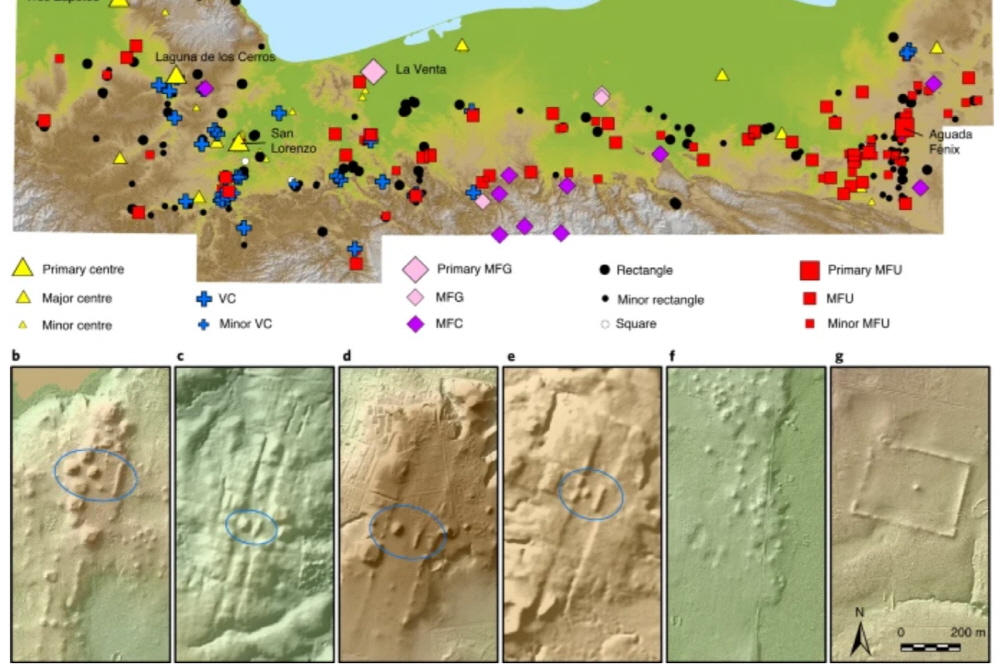
The Instituto Nacional de Estadistica y Geografia (Instituto Nacional de Estadistica y Geografia) and others have discovered hundreds of Maya and Olmeca priestly remains in southern Mexico through a geographic survey from above using lidar. Researchers at the University of Arizona found 478 priestly outlines when they surveyed the region along the Gulf Coast, stretching from the center of Olmeca to the western Maya lowlands just north of the Guatemalan border.
The research suggests that the Mayan civilization may have inherited cultural ideas from the Olmeca peoples, who flourished on the southern coast of Mexico between 1500 and 400 BC. The priestly remains found are believed to have been built between 1100 and 400 BC at the same time as the remains of Aguada Fenix near the Mexican-Guatemalan border from the characteristics of the building layout.
In addition, it was found that the priestly ruins of the Lorenzo ruins in Tabasco, Mexico, the oldest Olmeca civilization, also have a common arrangement in terms of layout. The researchers say that San Lorenzo is important in this regard as the basis for several ideas that were later passed on to Maya. This suggests that the Maya may have inherited the concept of ritual or religious substrate from the Olmeca.
Of course, there are differences between the two civilizations. For example, on the walls of the San Lorenzo ruins, there is a picture of the ruler at the time who directed the construction of the ruins, whereas on the Aguada Phoenix side there is none. It may be a coincidence, but it is speculated that the Mayan ruins were built with the cooperation and effort of equal people. The research team estimates that it may have been that there were many areas where there was not much hierarchical organization as it was a period of transition to sedentary life.
Recently, numerous remains of irrigation canals, roads, and fortresses have been discovered in the area of the Mayan civilization spanning the borders of Mexico, Guatemala and Belize. The reason is that the method of irradiating from the sky at once was utilized by lidar. The LIDAR infrared laser light can 3D scan the ground by penetrating the leaves that cover the ground, so the investigative team can discover the features of ancient civilizations hiding here without stepping into the forest.
One expert said that the advantage of LiDAR is that it can see buildings, roads, farmland, and irrigation water in 3D from ancient civilizations, so you can discover old landscapes and infrastructure hidden by forests in many areas of the world. Related information can be found here.


















Add comment